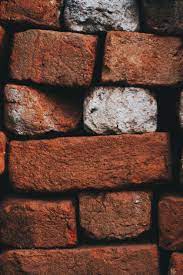Benefits Of Tuckpointing In Chicago

Chicago, a city known for its iconic architecture and historic charm, stands as a testament to the enduring beauty of brick structures. Amidst the urban landscape, tuckpointing emerges as a crucial process for maintaining and enhancing the integrity of these structures. In this article, we'll explore the myriad benefits of tuckpointing in Chicago, from structural reinforcement to aesthetic preservation, underscoring the importance of this meticulous craft in the city's architectural narrative.
In the dynamic city of Chicago, where architectural legacy meets modern living, the benefits of tuckpointing are manifold. From ensuring structural stability to preserving the distinctive charm of historic buildings, tuckpointing plays a crucial role in the ongoing narrative of the city's architecture. By recognizing the value of this meticulous craft, property owners in Chicago can contribute to the longevity and vibrancy of the city's rich architectural tapestry.
Tuckpointing emerges as a cornerstone for the preservation and fortification of brick buildings in Chicago, playing a pivotal role in maintaining their structural stability. By systematically replacing deteriorating mortar with fresh, robust material, tuckpointing becomes a safeguard against the risk of brick displacement, ensuring the overall solidity of the structure.
Beyond structural concerns, tuckpointing is essential in Chicago's changing environment because it creates a watertight seal that prevents moisture intrusion and the ensuing risks of water damage, such as efflorescence and spalling. This painstaking procedure prolongs the life of the bricks and endures the severe freeze-thaw cycles typical of Chicago's climate, maintaining the classic visual appeal of the city's rich architectural legacy. In addition, tuckpointing helps to improve energy efficiency by controlling interior temperatures, decreasing mortar gaps and cracks, and perhaps lowering total energy usage.
Beyond structural concerns, tuckpointing is essential in Chicago's changing environment because it creates a watertight seal that prevents moisture intrusion and the ensuing risks of water damage, such as efflorescence and spalling. This painstaking procedure prolongs the life of the bricks and endures the severe freeze-thaw cycles typical of Chicago's climate, maintaining the classic visual appeal of the city's rich architectural legacy. In addition, tuckpointing helps to improve energy efficiency by controlling interior temperatures, decreasing mortar gaps and cracks, and perhaps lowering total energy usage.
The advantages don't end there; enhanced curb appeal and a beautiful exterior may also raise the value of your house. Tuckpointing serves as an economical preventative maintenance procedure that takes care of little problems quickly, preventing the need for future, more involved and costly repairs. Tuckpointing revitalizes the external look of buildings by achieving accurate color matching and aesthetic improvement, which promotes a sense of freshness and diligent preservation. Crucially, tuckpointing involves not just making quick fixes but also reducing structural risks, seeing possible problems early on, and fixing them to avoid bigger problems later on, including crumbling bricks or weakened structural integrity.
This commitment to early intervention aligns with sustainable practices, promoting the preservation of existing structures over complete replacements and thereby reducing the environmental impact associated with demolition and reconstruction. In essence, tuckpointing emerges as a multifaceted practice that not only strengthens buildings but also contributes to the sustainable preservation of Chicago's architectural legacy.